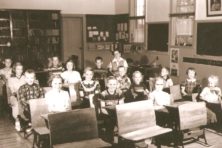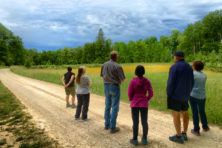Population Projections Reveal Bleak Future for Rural Schools
- Share
- Tweet
- Pin
- Share
Faced with continuous declining enrollment and steady or rising costs, rural school districts will struggle to make ends meet, according to demographic projections from the University of Wisconsin-Madison Applied Population Lab.
“If we look at rural districts… they are declining and they are projected to decline,” said Sarah Kemp, researcher with the Applied Population Lab, at a Nov. 13 presentation of the lab’s data. “The aging population, fewer children being born, younger people leaving, there are all of these things happening in these rural districts that I don’t foresee a change in the near future.”
While Kemp’s research focuses mostly on rural school districts, the observations in that field mirror trends and struggles prevalent throughout rural communities: access to health care, job loss, poverty, and deteriorating transportation and infrastructure.
Kemp noted that the current school funding formula is based on enrollment, which disproportionately affects districts with declining enrollment. Those schools still need to pay their overhead costs – teachers, transportation, and keeping the lights on – but the loss of school funding due to declining enrollment does not accommodate that.
According to data from the 2016-2017 school year, 27 percent of rural school districts are operating at a net loss when it comes to spending per student, compared to 12 percent of urban districts.
In the November election, 90 percent of the 82 school referendums up for consideration throughout the state passed, including all the referendums Door County. But Kemp warned that 83 percent of the referendums that passed are coming from districts that show a declining student enrollment.
Kemp said despite talk of consolidation of rural school districts, there has been very little action. Consolidation was a refrain of opponents to Sevastopol’s $25.1 million referendum to reconstruct its aging school building. Sevastopol’s enrollment has declined 13 percent in the last 20 years.
Rural populations in Wisconsin are older than urban communities, with a median age difference of eight years. Birth rates among rural residents are also down. Add the migration of youth out of the state or to in-state urban areas and it creates a bleak outlook.
But Kemp said the growth of the hispanic population in rural areas has filled a portion of the gap left by this decline.
“We are seeing a trend in terms of projecting out future high school students, that these districts are more diverse and that diversity is growing in the state over time,” Kemp said. “Hispanic populations more than make up for loss of white population in [some] schools. The hispanic population is not only replacing but actually increasing enrollment.”
But rural schools will need to increase services for english proficiency if that trend continues.
There are a few programs in the state that encouraged young professionals to work in rural or underserved areas of the state. A 2017 bill in the legislature proposed paying off law school loans if new graduates practiced in rural areas. But it is unclear how effective those programs are at keeping young professionals in town once they have cashed in on the program.


